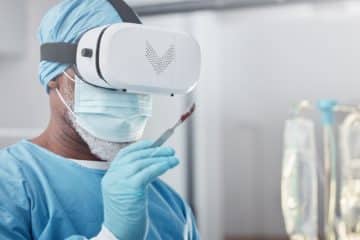Vascular Grafts
Since our knowledge about using skin grafts to treat burning wounds (and many other wounds, too) has grown, I thought I should try to provide more information about other types of grafts, starting with vascular grafts.
Before I get into details, I need to talk about some terms which you might need to get acquainted with/ Grafting tissue means that tissue is taken from one person and then transplanted into that same person or another person.
Allograft syn. Homograft is used when tissue is taken from one person and transplanted into another. This tissue can be taken from a person who still has circulation or it can be from someone recently deceased.
Autograft syn. Autotransplantation: tissue is taken from one person and transplanted in that same person.
Just like any transplantation, there can be an immune response to a transplanted graft which is rejection. This doesn’t happen with an autograft, as the tissue there is taken and transplanted into the same person.
So what is a vascular graft?
An avascular graft means that a part of an artery or a vein is taken from a person and then transplanted into another or taken to a tissue bank. The goal of a vascular graft is to treat a patient who has any issue regarding blood flow.
Usually, patients with atherosclerosis will need a vascular graft so that the blood flow can bypass the obstruction and ensure that the patient gets enough blood flow. Patients who need hemodialysis might also need a vascular graft.
Usually, an autograft is preferred over an allograft because there’s no risk of rejection; however, autografts require the patient to undergo two surgeries, which might prolong the hospitalization period.
When is a vascular graft used?
There are quite a few pathologies where a graft is used. As mentioned before, patients with atherosclerosis, especially in the coronary arteries, might need a graft.
Patients who need hemodialysis can need an access point, often a graft. Nowadays, there are alternatives: AVflow, for example, is a nanofiber graft used in hemodialysis patients.
Grafts can also be necessary for the skull, which are called cerebral artery grafts, or in the legs, where there are a lot of different bypasses.
To visualize this process, I found a video about a coronary artery bypass where you can see how a superficial eg artery is used to bypass a blockage in a coronary artery. You can see the video below.
Risks
Autografting, just like any operation, comes with a few risks for the patient (embolism or internal bleeding). On top of these risks, we have a few more. When an allograft is transplanted, there’s also a risk of rejection and also a risk of infection (due to immunosuppression).
With autografts, we have a longer duration of hospitalization because two operations are performed.
Regardless of the risks grafting is something that has become more and more important in the 21st century especially to help patients with atherosclerosis. Since heart and vascular diseases have become more prevalent vascular grafting will prove it’s worth more and more in the future.


